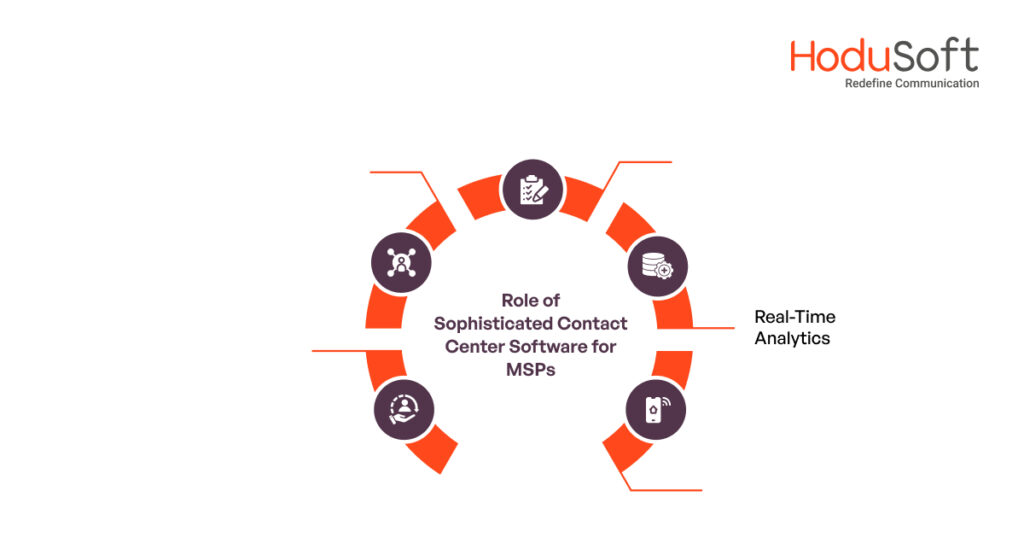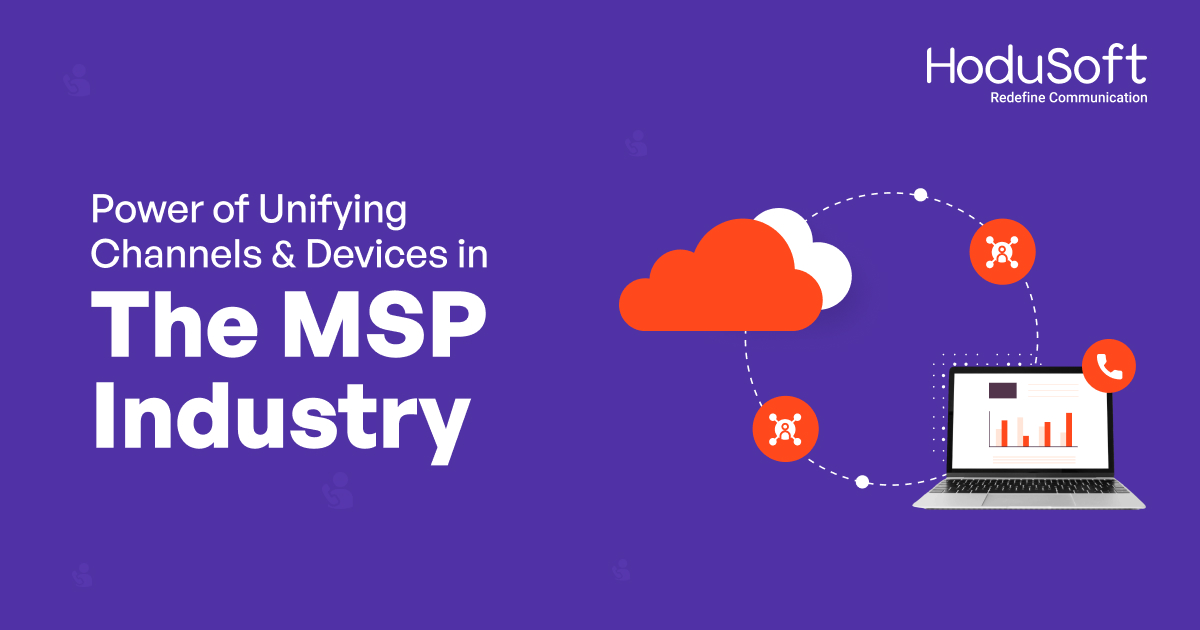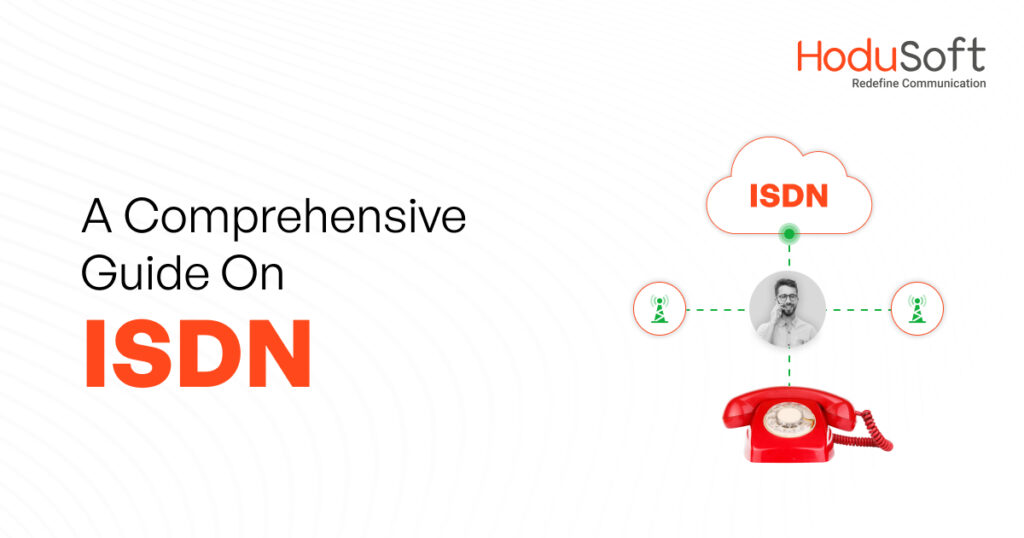A Comprehensive Guide to Coordinating and Unifying Channels & Devices in the MSP Industry
Today, more and more enterprises are investing money in Managed Service Providers (MSPs) than ever before. Traditionally, the majority of clients of MSPs used to be small and midsize businesses (SMBs), government agencies, not-for-profit organizations, and other organizations that don’t have a dedicated in-house IT team.
But now, larger and well-established businesses are using the specialized services of MSPs. As per a recent study, the number is 55 percent to be precise. About a third of the enterprises take the help of MSPs to manage cybersecurity threats, nearly 35 percent rely on MSPs while undergoing digital transformation, and 36 percent while migrating to the cloud.
And that’s not all. As per data by Datto, MSPs, on average, have 122 clients. Nearly three out of five clients have between one and 150 employees. If you are a professional service provider, you can understand how demanding it can be from a customer service perspective for any small or mid-sized business that’s serving just ten clients. Now multiply the client size by 12, that’s the number of clients that an average MSP serves today.
When an average MSP serves that number of clients then it’s quite obvious that effective communication and customer service are of paramount importance.
Investing in the right communication software and systems can go a long way in ensuring the coordination and unification of communication across multiple devices and channels in the MSP industry.
This blog post explores how a sophisticated communication system such as HoduCC contact center software can coordinate and unify communication across multiple devices and channels and ensure the success of MSPs. Read on and thank us later.
The Significance of Unified Communication in MSPs
MSPs operate in a complex ecosystem where communication occurs through various channels such as phone calls, emails, chat, and social media. Coordinating these interactions is crucial for:
- Delivering exceptional service
- Optimizing operational efficiency
- Fostering strong client relationships
Here are the key significance of Unified Communication in MSPs:

1. Seamless Communication
Unified communication ensures that information flows seamlessly across the organization. With contact center software, MSP teams can collaborate in real time, share insights, and make informed decisions collectively.
2. Improved Client Engagement
Clients expect a consistent and responsive experience. A unified communication approach enables MSPs to engage with clients on their preferred channels, providing a personalized and efficient service that enhances overall satisfaction.
3. Optimized Workflows
Streamlining communication through a centralized platform simplifies workflows. Contact center software allows MSPs to integrate various tools and applications, eliminating silos and creating a unified ecosystem for managing tasks, projects, and client interactions.
4. Enhancing Collaboration Across Distributed Teams
In the contemporary work environment, MSP teams are often distributed across different locations or working remotely. Unified Communication fosters collaboration by providing real-time communication channels and collaborative tools. By doing so, team members stay connected and work together seamlessly irrespective of geographical barriers.
Unlock Your MSP Success Today!
Connect with HoduSoft Expert Now!
The Impact of Ineffective Communication in the MSP Industry
A study titled “The Cost of Poor Communications,” which interviewed 100,000 employees across 400 companies, found out the average loss per company of USD 62.4 million per year because of inadequate communication to and between employees.

1. Disruptions in Service Delivery
For MSPs, deployment and timely delivery of service matters a lot. When communication between employees and customers is in effectives then it disrupts the service delivery and it results in a poor customer experience. The losses caused due to ineffective communication is not limited to MSPs alone.
Recent stats show 86 percent of executives and employees cite the lack of effective collaboration and communication as the main causes of workplace failure.
A latest study reveals that four out of every five MSPs have experienced an outage or brownout in the previous year. It’s a huge number. Just imagine the disruptions it caused to the service delivery and deployments in the MSP industry when eighty percent of the service providers have faced some type of outage or brownout.
2. Client Dissatisfaction and Potential Loss
As mentioned in the introduction, MSPs, on average, serve 122 clients. That’s a huge number. Just imagine what a single instance of poor communication can affect their experience. When communication is in-effective then it results in client dissatisfaction and it also may lead to huge loss.
That should not come as a big surprise when we consider the power of effective communication is leading to client satisfaction and client delight. Effective communication is directly proportional to the clients’ experience.
3. Security Risks
Can ineffective communication lead to security risks? Yes! As per recent reports, cyberattacks targeting MSPs started to rise after 2020. What’s astonishing is that 95 percent of cybersecurity breaches are due to human error.
In the ever-evolving landscape of cybersecurity, the role of effective communication in mitigating security risks cannot be overstated.
When communication is fragmented or unclear, it opens avenues for potential security breaches. The lack of standardized communication procedures can inadvertently expose vulnerabilities within the MSP infrastructure.
That’s why MSPs must invest in a robust communication system such as sophisticated contact center software that can help them to unify and coordinate communication across channels and devices.
4. Increased Operational Inefficiencies
Operational efficiencies lie at the heart of every successful MSP. When communication across channels and devices lacks coordination, it invariably leads to increased operational inefficiencies. These inefficiencies manifest as delays, miscommunications, and a general lack of cohesion within the team.
Tasks that should seamlessly progress through different stages may encounter bottlenecks, hindering the overall workflow. As a result, the delivery of services may be compromised, affecting the MSP’s ability to meet client expectations and maintain a competitive edge in the industry.
The Role of Sophisticated Contact Center Software for MSPs
Contact center software acts as a central hub for communication in MSPs, offering a range of features to streamline processes and enhance collaboration. Here are some ways contact center software can help-

1. Automate Customer Service Processes
Would you be surprised to know that a majority of MSPs are looking to automate their processes? As per a study, MSPs dedicate almost 40 percent of their time to manual and repetitive tasks. That inhibits them from pursuing strategic goals and innovation. As per data, 95 percent of MSPs feel that automating their processes is essential to focus on strategic goals and innovation.
The same source revealed that 42 percent of MSPs feel automating tasks enhances their time efficiency, 34 percent of them feel that automation can lead to reduced errors, and about a third believe that it can result in higher profits.
That’s where the right contact center software can help. Leveraging contact center software can help them automate a wide range of manual and repetitive customer service processes.
2. Multi-Channel integration
At a time when more and more people are using multiple channels of communication to seek customer support and assistance, it’s prudent to invest in omnichannel (or multi-channel) support. As per recent stats, nine out of ten people expect multichannel support from businesses they are transacting with.
When MSPs’ clients use a diverse array of communication channels to seek assistance, they must have the ways and means to handle their requests and solve their problems.
Modern contact center solutions can seamlessly incorporate various communication channels such as phone, email, chat, and social media. By unifying these channels, MSPs ensure that they can engage with clients and resolve issues efficiently, irrespective of the specific channel the client chooses. HoduCC contact center software is well-equipped to support multi-channel communication and collaboration.
3. Unified Customer Profiles
One of the key advantages of utilizing contact center software lies in its ability to consolidate customer information from diverse touchpoints, creating unified customer profiles. This holistic view empowers MSPs with a comprehensive understanding of each client.
From their historical interactions with the MSP to their preferences and specific requirements, having a unified customer profile facilitates more personalized and targeted interactions. This, in turn, enhances the overall client experience and fosters stronger, more meaningful relationships.
4. Real-Time Analytics
Contact center software doesn’t just facilitate communication; it also serves as a powerful analytical tool. The inclusion of real-time analytics features provides MSPs with valuable insights into communication patterns, client satisfaction levels, and team performance.
By leveraging this data, MSPs can make informed, data-driven decisions. This capability is instrumental in optimizing internal processes, identifying areas for improvement, and ensuring that the communication strategies align with the evolving needs and expectations of both the MSP team and their clients.
5. Mobile Accessibility
Considering the dynamic nature of MSP work, where professionals are often required to be on the move, contact center software incorporates mobile accessibility features. This ensures that communication remains uninterrupted even when team members are away from their desks.
With mobile accessibility, MSPs can maintain constant connectivity, allowing for swift response times and effective collaboration regardless of the physical location of team members. This adaptability contributes to the overall agility of MSP operations.
Conclusion:
In the MSP industry, effective communication is the linchpin of success. That’s why adopting a unified communication approach with the help of contact center software is not just a choice but a necessity. It’s just like a hygiene factor. Its absence can be a dealbreaker.
Sophisticated solutions such as HoduCC contact center software can enable MSPs to streamline communication channels, improve collaboration, and leverage real-time analytics. By leveraging HoduCC contact center software, MSPs can elevate their service delivery, enhance client satisfaction, and position themselves as leaders in a competitive market.



